In this story, we take a look at blower door testing, how it works and how it can benefit homebuilders and homeowners alike.
What Is a Blower Door Test?
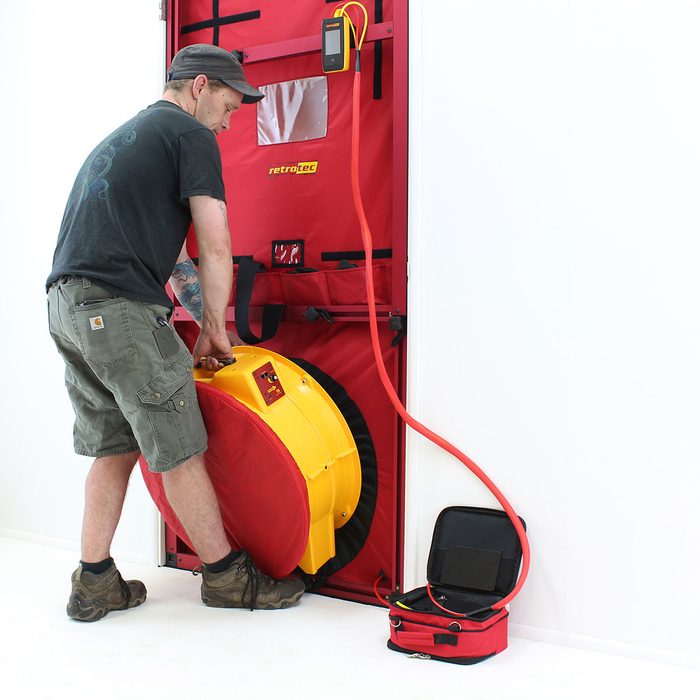
What is a blower door test?
A blower door test is a way to check how air-tight a structure is. It is designed to check for air leaks in walls, attics, and mechanical penetrations. While a blower door test does not evaluate how well a structure is insulated, it can reveal drafty walls and air-bypass situations that could undermine otherwise well insulated wall assemblies. A poorly sealed houses will have higher utility bills, issues with comfort, and potential mold an rot issues caused by moisture. Blower door testing can be carried out on residential homes, commercial structures, and industrial buildings. In some states they are required by code for residential areas. (Always check with your local building codes)

Does my building need a blower door test?
Blower door testing is a crucial part of energy audits for those seeking certain high-performance certifications or ratings like LEED. They may even be required by building/energy code depending on the type of structure and the specific code requirements in your own municipality. Again, check with your local building codes. Residential new homes and government/military buildings are the two most common structures being tested.

How does a blower door test work?
A blower door kit consists of a frame covered in canvas that can be adjusted to cover an exterior door opening. A calibrated fan fits inside the frame and canvas to either pressurizes or depressurizes the building. A manometer sensor mounted inside the fan box reads the indoor pressure as well as the outdoor pressure which is displayed on the digital gauge. If the house is pressurized, the manometer tracks how much air is escaping to the outdoors through leaky areas. If the house is depressurized, the manometer tracks how much outdoor air is being sucked in through the leaking areas into the envelope. Many prefer to depressurize the house because this method won’t blow open any dampers on dryer vents, bath vents, that could potentially give you less accurate readings.
Once the pressure is introduced, air leaks in the envelope can be tracked down with a smoker or thermal imaging camera.
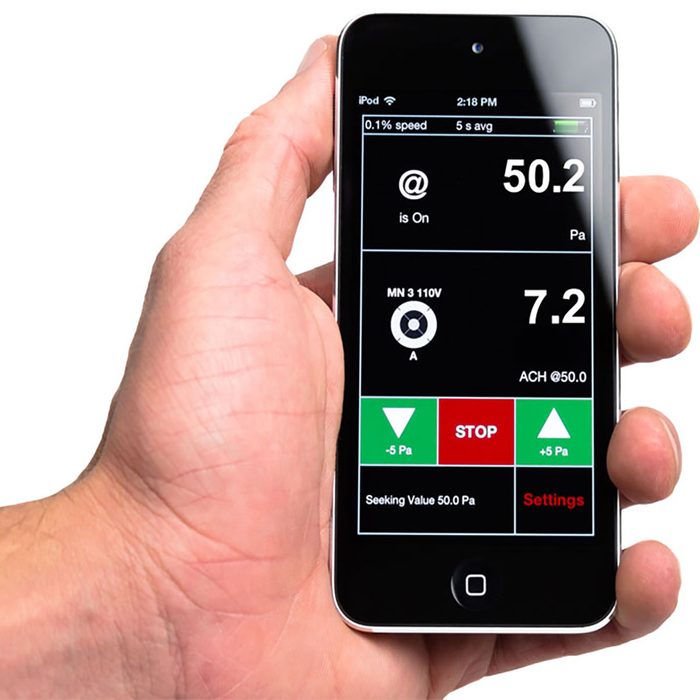
There are apps available that can provide real-time data to your phone or wireless device. This allows you to travel away from the blower unit and still receive data while inspecting areas in the structure. The apps will also run the calculations for you, as well as store the information with geo-locate and the weather from the day of the testing. Learn about the pros and cons of commonly used types of insulation.
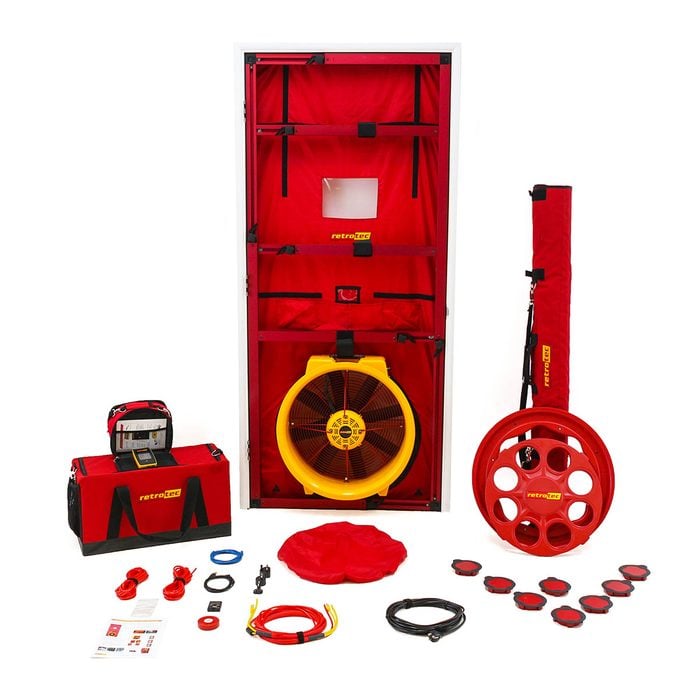
Single-point testing
Single-point testing is one of two types of blower door testing. A Single-point test is performed by pressurizing or depressurizing a structure to 50 Pascals (Pa). For a point of reference, 50Pa is equivalent to a 20 MPH wind hitting the house from all sides. The manometer in the fan box is used to monitor the leakage, which is recorded in Cubic feet per minute (CFM50) or Air changes per hour at 50 Pascals of pressure (ACH50). ACH (air changes per hour) is a measurement in which how many times the air will exchange in the home under pressure.
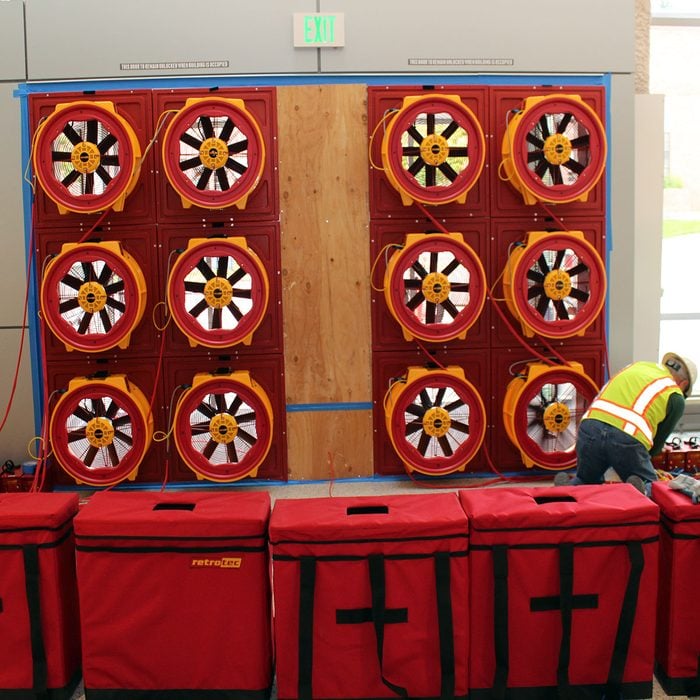
Mulit-point testing
A multi-point test is a more accurate way to measure where the envelope is leaking air. During a multipoint test, several readings from a manometer inside the fan box are taken between 0 Pa and usually 60 Pa. Taking these multiple measurements at different Pascals (Pa) can be a better way to determine where the air is leaking from through the envelope. Houses perform differently at lower pressures than higher pressures so it is good to include this lower pressure range to get a more accurate reading. An app such as rCloud is needed to run multi-point.
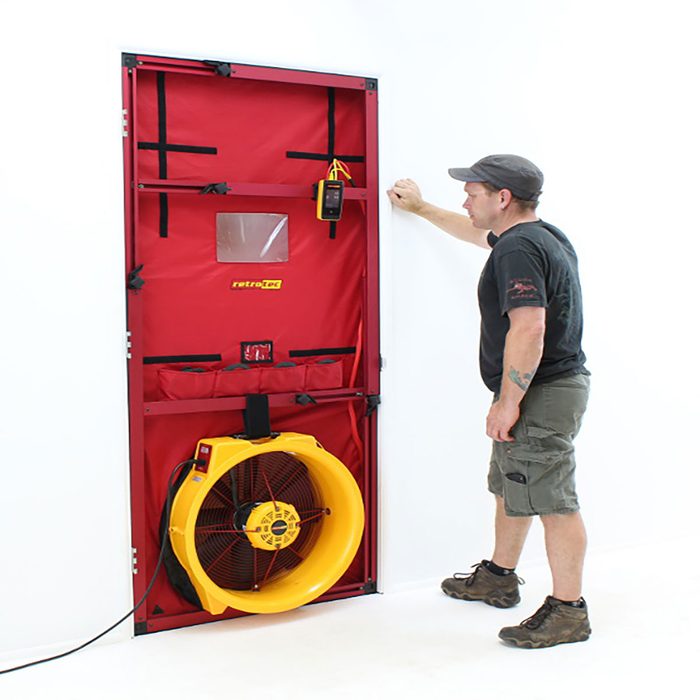
How long does a blower door test take?
It takes approx. 5-15 minutes to run the actual blower door test itself. It’s the prepping that takes the longest, about 1.5 hours on a standard home. Prepping the building includes:
- Closing and locking all exterior doors and windows
- Opening all interior doors
- Sealing off chimneys
- All combustible appliances need to be turned off or set to pilot

When is the best time to conduct a blower door test?
Blower tests can be done all year around. However, thermal cameras work better (show more contrast) when there is a large temperature difference between the inside and outside.
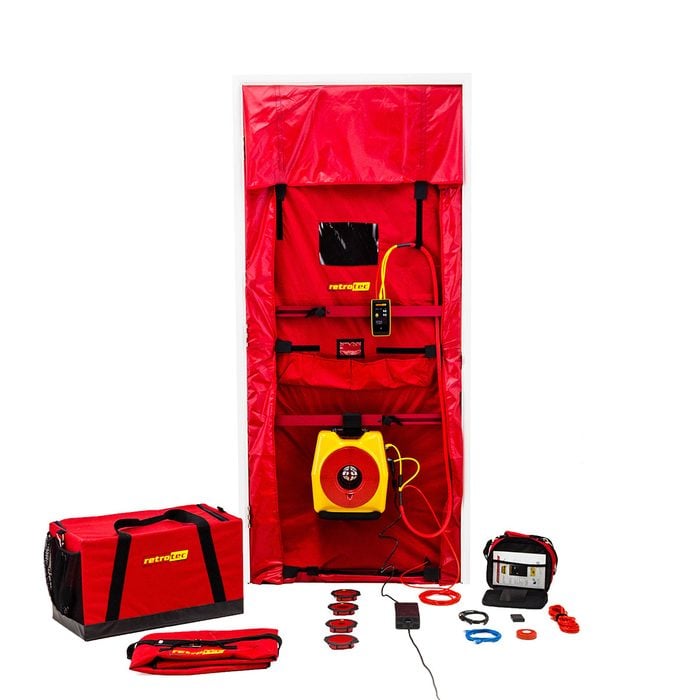
How much does it cost to get a blower door test done?
You can hire a professional to perform a blower door test and energy audit for approximately $300-$400 for an average sized house. You also have the option to perform your own testing. More and more builders, remodelers, insulations companies, and HVAC companies are choosing to do them in-house. Some municipalities, but not all require a blower door testers to be certified by a HERS Rater or BPI Analyst. Others municipalities only require an IDL ( infiltration duct leakage certificate) or a DET (duct envelope tightness certificate).
A basic blower door starter kit consists of the following:
- Fan/blower
- Frame
- Canvas
- Pressure gauge assembly (color coded hoses and ports to reduce user error)
- Tubing to connect gauge to fan and gauge to outside
The price of a starter kit typically starts around $3000 and goes up from there. You will also need a monitor, smoker and thermal imaging camera. You do have the option to rent these from the manufacture, but this usually happens when larger jobs (commercial buildings) are needing multiple units to do the test.
Next, read about energy-efficient roofing here.
Every product is independently selected by our editors. If you buy something through our links, we may earn an affiliate commission.




















